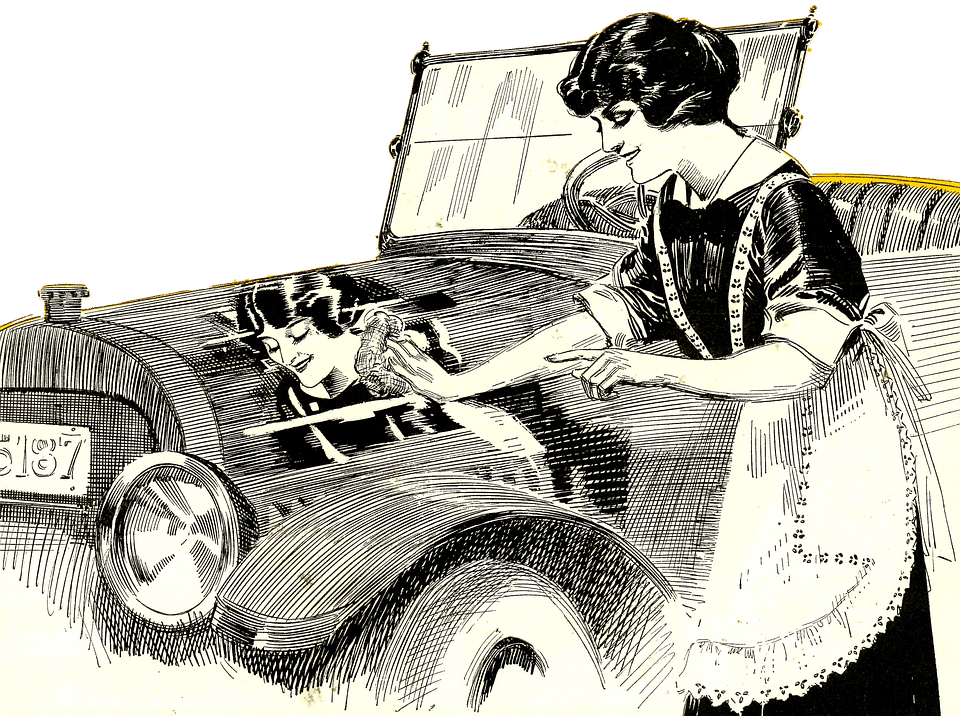
Classic cars and trucks are an investment and require special care so they can remain as valuable as possible. During the summer months our classics usually get more drive time and therefore need to be washed and kept clean more often. Many owners will wash their cars weekly to make sure the paint stays looking its best.
When washing your vehicle there are quite a few things that need to be considered to make sure that it is done safely and not to cause any scratches or marks in your car’s finish. If washed improperly this can easily happen.
Car Wash Frequency
If your classic is stored and not being driven often you probably don’t have to wash it weekly. On the other hand, if you are cruising it around a couple time per week, then you should make it a weekly ritual to clean your car.
Even if the weather is perfect there are still contaminants in the air that can damage the paint on your car. Insects, for example, are likely to meet their demise on your windshield or grille. Bugs can be one of the most damaging things for a classic car and need to be removed as soon as possible. Hopefully they aren’t large enough to cause any scratches upon impact, but bugs that are left on the paint will start to deteriorate your paint and can even cause corrosion.
Regardless if it is dirt, bugs, grease or grime, all contaminants you pick up out on the road need to be removed as soon as possible. That is why we suggest you wash your classic at least once per week during the time of year that you use it the most.
Before You Start
When it comes time to wash your classic car or truck you want to make sure that you have the right tools to make sure your prized possession doesn’t get damaged. The worst thing you could do is use something that could scratch your paint while you attempt to “clean” your car.
You might consider going to a local car wash from time to time instead of washing it at home by hand. If you do, make sure the professional car wash uses foam spray machines and softer water in order to prevent damage. You might want to also look for a car wash that uses eco-friendly soap as well. They are not only easier on your paint, but easy on the environment too.
When washing your car at home make sure you use sheepskin or cotton chenille washing mitts. These will glide over your paint without causing any scratches on the body. They can also usually get into the smaller and harder to reach areas of the car compared to a brush or sponge.
Time to Wash
in order to get an optimal car wash, there are some steps you should take to ensure you get the best wash possible.
- Start at the top. Regardless of the vehicle you want to start at the top and work your way down to get the best results. Starting at the top ensures grime and dirt won’t recontaminate an area of the car that was already washed. Let gravity do its work. If you start at the bottom you are much more likely to introduce brake dust and grease to the higher parts of the car.
- Use proper soap. You wouldn’t use dish soap in the shower to clean your hair or body right? Well the same thing goes for selecting the right soap to wash your car. The wrong soap can leave your paint finish looking dull and lifeless. There are tons of great soaps out there that are specifically made for classic cars to help the paint get clean and really shine. Here’s a nice article about selecting soap to wash your classic.
- Wash the wheels last. Make sure your entire classic is clean before moving on to your wheels and tires. Wheels tend to be one of the dirtiest parts of a car and you don’t want to risk ruining your paint by accidentally rubbing on brake dust, grease and other roadway grime.
- Give a final rinse. After all is said and done, give your classic a final rinse. It is best to use a steady stream of free-flowing water to make sure all areas are thoroughly rinsed and soap free. Many carwashes now offer a steady water flow that causes the water to bead up on the car, which helps to keep the car spot free once you drive away.
After the car has been fully washed, it is very important for a classic car to be completely dried before it leaves the carwash parking lot. Since water contains small minerals, it will dry and leave mineral marks on the paint of a car. Drying is one of the most important steps when washing a classic car and you need to use a soft leather chamois or a soft microfiber towel instead of regular hand towels, as these can scratch the surface of the car.
When you are drying, again start at the top and move your way slowly to the bottom of the car. Be sure to dry even the tiniest crevices of the car as rust is very prone to set up in classic cars and always make sure the towel that you are using is clean and dirt free. Always dry the tires and wheels last to ensure that no grease will be spread back across the paint once you have it completely clean and dried. Changing towels often when drying a car is going to be imperative when it comes to having a shiny and clean car when you are finished.

